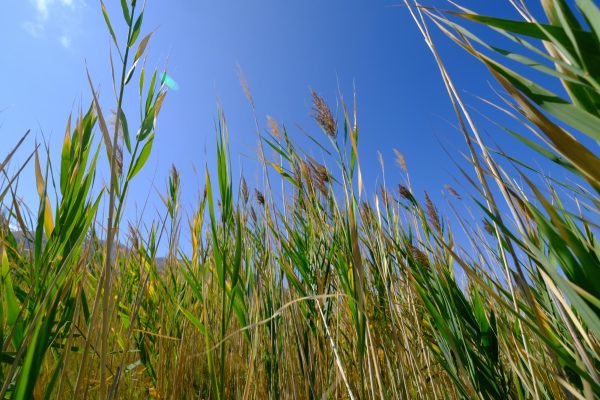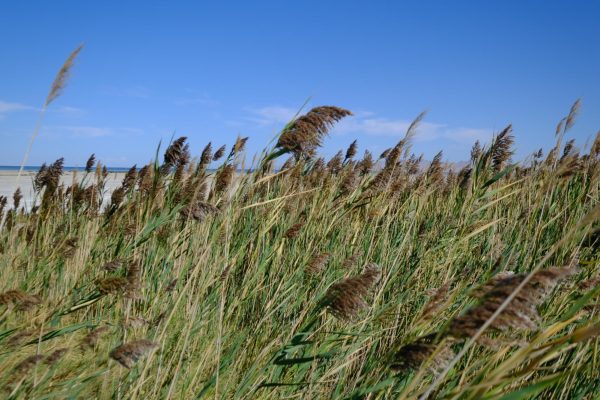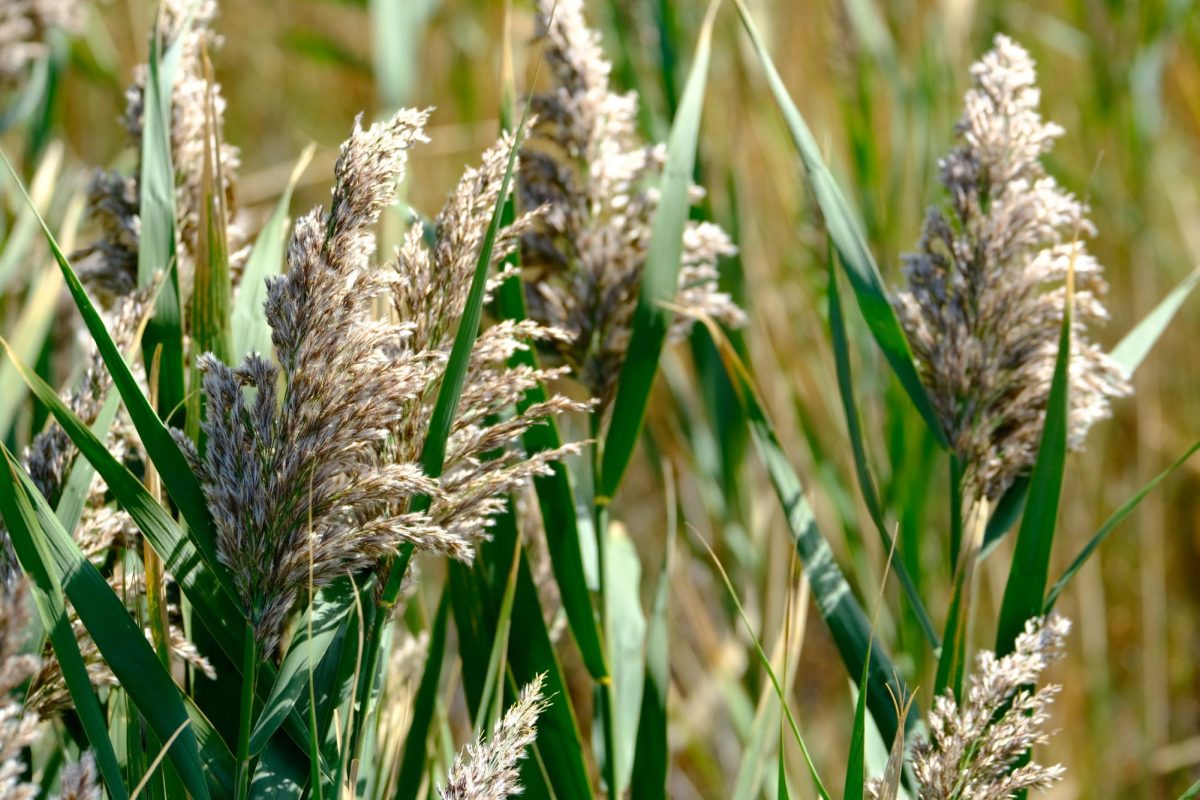I’m going to start this off by stating the obvious: the water levels in the Great Salt Lake are critically low and continuing to face recession. I know, I know, we’ve all heard this before. It is, at once, a supremely pressing issue—perhaps the most urgent one we face in this region—and oversaturated in terms of reporting. There are plenty of articles and studies that have been written about the Great Salt Lake and the knife that sits waiting at its throat—a few that have been written by fellow Wasatch contributors.
I am not going to pretend that I know more about this issue or can write a better, more engaging article than those who have discussed it in the past. There is an aspect of it, however, that I believe has remained somewhat under the radar: the invasive Phragmites australis, also known as the common reed or simply Phragmites.
What’s the deal with Phragmites australis?
Thought to be introduced to North America from Europe in the 19th century, Phragmites australis has found a home among marshes and wetlands across the entire contiguous United States. Within the last few decades, this exotic grass has taken a special liking to the wetlands of the Great Salt Lake. It is believed that the reed found its foothold in the lake in the 1980s after a flood destroyed much of the native vegetation in the area. Since then, it has spread tens of thousands of acres, firmly rooting itself in the lake’s ecology. It has also found refuge in Utah Lake and parts of the Jordan River.
Phragmites australis has become a subject of concern for the Great Salt Lake because of a couple of reasons. For one, it spreads aggressively. It can spread up to 20 feet per year through both wind-blown seeds and underground, horizontal shoots called rhizomes. It can also reach heights of 15, or even 20, feet. These characteristics together make it an efficient and terrifying conqueror of habitat, a green Genghis Khan. This chokes out native vegetation that is ill-prepared to go toe-to-toe with such a force. This threatens the biodiversity of the lake’s wetlands, taking an immense amount of space for itself and impacting the nesting areas of migratory birds.
For two, the common reed is what the scientific community calls a “thirsty little guy.” Okay, maybe that is not exactly what they call it. Regardless, Phragmites consume a lot of water. A 2016 study by the Division of Water Quality found that Phragmites australis used 3.62 acre-feet of water per acre of Phragmites through evapotranspiration*. This is compared to 1.55 acre-feet of water per acre of Inland Saltgrass, a native wetland grass. Furthermore, a thick patch of Phragmites can block water from flowing into the lake proper. The amount of water consumed or blocked by Phragmites contributes to the receding water levels of the Great Salt Lake, further impacting habitat and biogeochemical processes in the lake.

An unwarranted interlude
What I find interesting about this problem is how we distinguish things that are “invasive” versus simply “introduced.” No one thinks of apples, potatoes, or peaches as invasive, in spite of their existence as non-native species. Rather than being villainized as weeds, these plants are applauded as staples of our agricultural industry.
And the distinction does not seem to be in whether an introduced plant causes harm to local ecosystems, like Phragmites australis, either. All plants that we have introduced for agricultural purposes use a lot of water, at least under our current agricultural system. And due to the currently popular agricultural practice of monocropping, biodiversity is significantly decreased in the fields that they inhabit. Granted, the issues here are largely human-created, but, keep in mind, we are an invasive species, as well. I think the underlying theme here is control. What remains under our control, and what lies beyond it. But history did not ask for my opinion, and I have gone wildly off-topic. I digress.
A not-so-simple guide to handling Phragmites australis
Due to the various ways in which Phragmites australis is harming the ecologies of the Great Salt Lake, measures are being taken to eradicate its clusters and stunt its conquest. Due to its aggressive nature, Phragmites must be treated with aggressive tactics. The solution being utilized is a cocktail of direct destruction and preventative measures to hopefully keep it from spreading further or making a resurgence. These include herbicide spraying, burning, mowing, grazing, and revegetation.
One solution that I would like to highlight is the revegetation process. Unfortunately, if Phragmites has been in an area for a long time, the native vegetation that once inhabited it will not return on its own. Because of this, researchers at Utah State University are studying the best way to restore those native plant communities to their previous splendor. This research involves finding which native species to include in the seed mixes that will be spread throughout the treated areas and in what proportions to include them. Also included is at what density to sow the seeds to most effectively reintroduce those plants.
To more effectively control Phragmites populations, the Utah Department of Natural Resources has been researching techniques to map and model possible treatment and follow-up areas. This is also useful in distinguishing between Phragmites and native plants to avoid herbicide overspray—a potential negative effect of using herbicide in the treatment process. The researchers have tested two different approaches: a manual approach and a machine-learning approach. Each has their own positives and negatives. The manual approach takes longer but allows for greater species detail. The machine-learning approach takes far less time and effort, but is only able to identify small Phragmites patches and vegetation communities.
To adequately address the infestation of Phragmites australis, so many different techniques and technologies have to be used. It is cool to see how such wide-ranging subjects intersect around this issue. In a way, it reflects the environmental movement, as a whole, as it involves so many other areas of study. Economics, social justice, science, sociology, these all have their niche in the environmental movement. Conservation efforts, such as this, are included. Due to the wide swath of mitigative steps that have been taken, 55,000 acres of Phragmites australis have been removed from the Great Salt Lake, as of 2024. Here’s to a reed-less future (at least for the Great Salt Lake).
*Evapotranspiration is the process of water evaporating from soil and transpiring from plants into the atmosphere.

Sources



